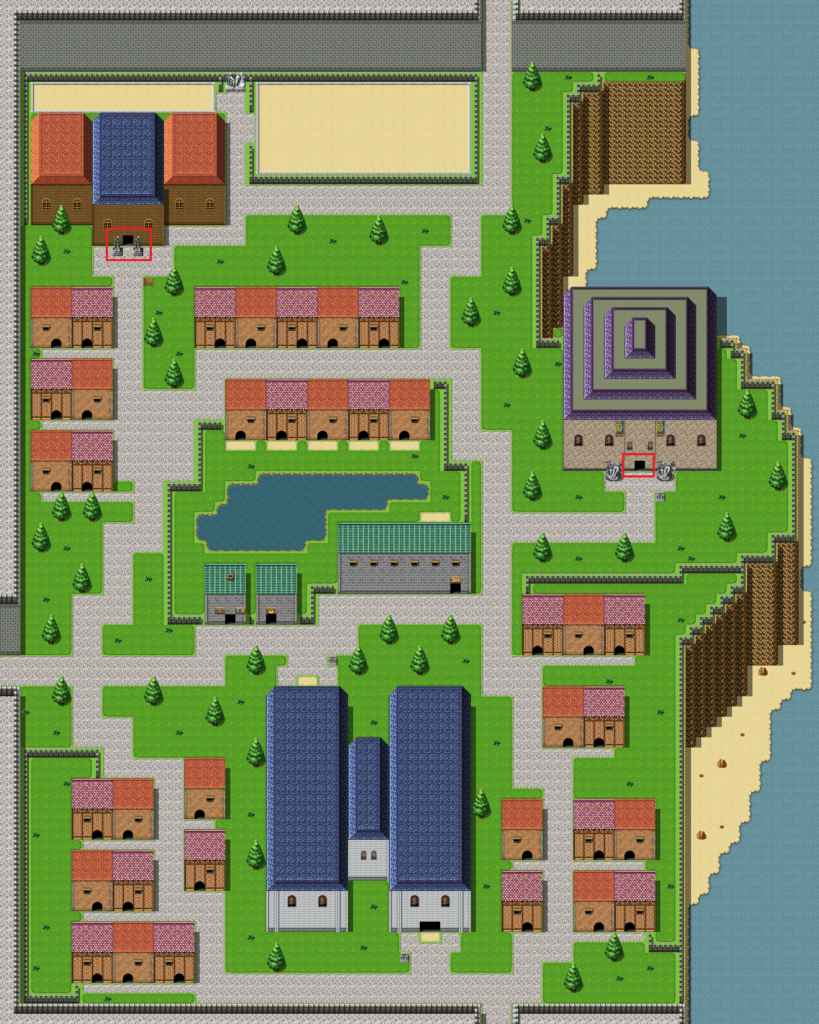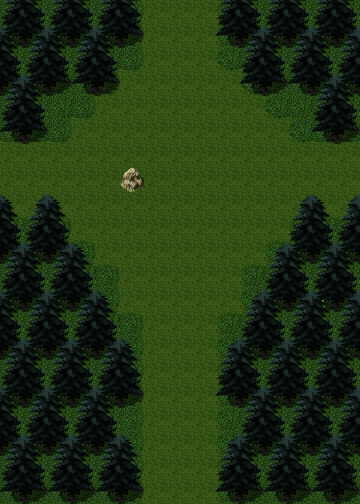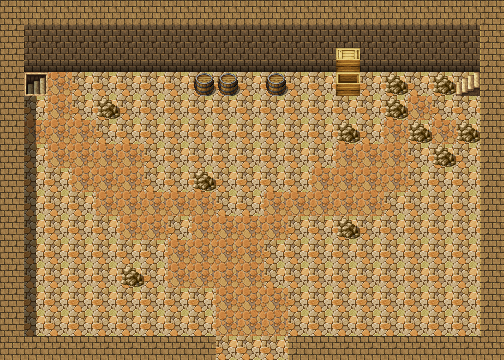The main quest of chapter 3 starts up when the player reaches the town of Zelium in chapter 3’s area, Murecum.

When the player arrives in Zelium, they meet an old wizard named Zelotes, who first appears in chapter 1 of the game. He states that his grandson is going to school in this town, and he came because he is worried about him. The party finds that absolutely everyone who lives in Zelium is lying around, semi-conscious, but unable to move. The player party and Zelotes decide to investigate.
Once the player checks the temple and the school (marked by the red boxes above), the party notices a suspicious individual leaving town to the north. To progress, the player must follow him.

The players find the suspicious individual at the reservoir just north of town. The party confronts him, and he summons some “fiends.” After combat, Zelotes arrives he says that this suspicious individual is his grandson, Weston. He and the party figure out that Weston was being controlled by fiends sent by the main antagonist to infect the town’s water supply with a substance that caused the townspeople’s near-comatose state. Zelotes can cure it, but he needs the blood of the archfiend that concocted the toxin. Weston says that the last thing he remembers was training in Thenesi’s Forest, to the north, so the player party must set out to the forest to find the archfiend.

In Thenesi’s Forest, the player meets the Spirit of Thenesi, who is an important mage in the kingdom’s history. In a sing-song fashion, she tells the player how to get through the forest and how to solve the puzzles. If the player tries to proceed through the forest without doing one of the melody replication puzzles or go the wrong way, he is teleported backwards. After some dialogue with Thenesi, the party members have some conversations among themselves and introduce some information about the country’s history that becomes relevant and somewhat necessary in the following chapters.
At the center of Thenesi’s illusory forest, the player arrives at Fort Latea, where the archfiend is hiding.

In Fort Latea, the Spirit of Thenesi intermittently lights the correct path the player needs to walk upon to get through the rooms. To reiterate the illusory and confusing nature of the magic that fills the forest, if the player strays from the path, he is teleported to the beginning of the room.
On the lowest basement floor of the fort, the player finds the boss, the Archfiend of Sloth (detailed below). After the fight, the player is rewarded with some loot, and Thenesi thanks the party by providing class upgrades. (See the blog posts “On Class Fantasy” if you are interested in details on how class specializations are designed in this game.) The party retrieves the archfiend’s blood and returns to Zelotes to help cure the citizens.
Enemies:
Forest Spirit – A support-type enemy with water and wind magic.
Fire Lotus – A mage-type enemy with wind and fire magic.
Floral Illusionist – A debilitation-type enemy with stuns, dodge buffs, and psychic magic.
Dryad Wind Warrior – A warrior-type enemy with wind and fire physical attacks.
This first set of enemies is based on the idea that the player is in an illusory forest. They generally try to be a little more dodgy than typical enemies to reinforce the illusory theme.
Winged Fiend Eye – A debilitation-type enemy with “silence,” “slow,” and dark magic.
Ocular Fiend – A debilitation-type enemy with “slow,” psychic magic, and the ability to increase the party members vulnerability to effects such as silence and slow.
Frost Fiend – A mage-type enemy with water and cold magic. It can also cast a luck buff to increase the chance of applying effects.
Flame Fiend – A warrior-type enemy with physical fire attacks, taunt, and self-healing skills.
Bloodseeker Fiend – A debilitation-type enemy that can afflict the player with “bleeding” and stuns.
This second set of enemies is mostly focused on debilitating the player with silence or slow. Silence restricts the player from spending mana, while slow restricts the player from spending tempo, a secondary resource. These enemies don’t do especially high damage, but can gain an advantage if they are able to stack effects on the player.
Boss – Archfiend of Sloth:
At the start of the fight, the Archfiend of Sloth is accompanied by an Ocular Fiend and a Spell Reflect Crystal.
The Spell Reflect Crystals grant a decent chance for the player’s spells to be reflected back at him while it is present. The boss spawns additional crystals at 66% and 33% HP. The boss also summons a Flame Fiend at 33% HP. Casting a spell while spell reflection is active is extremely risky, as the reflected spell could potentially do enough damage to kill the caster in combination with the enemies’ attacks. Additionally, having too many reflected spells could result in the player’s damage per turn being too low and have him reach the turn limit if he is playing on hard mode.
The Ocular Fiend starts the fight with the boss to help apply debilitations while the player is dealing with the Spell Reflect Crystal. The Flame Fiend appears towards the end of the fight to protect any additional enemies the player may have neglected to clean up. As it appears with the final Spell Reflect Crystal, this fiend also makes it harder to smash it.
As for the boss itself, the Archfiend of Sloth has a mixture of AoE attacks and heavy single-target attacks. For elemental damage, it can cast an AoE water spell, and follows it up with a Dark/Lighting Fusion spell on the next turn. The boss can cast “Sleep” to hinder a party member for a while, but most notably, it has its “Breath of Sloth” attack that can apply “Slow” to the player and deal decent AoE damage. “Slow” restricts the player’s tempo skills, which, at this point in the game, is most of the player’s ability to deal physical damage, and the player needs that physical damage if they do not wish to risk the chance of getting their spells reflected by the previously mentioned crystals. Since the boss is slow, it will cast illusory magic, as seen before with the Floral Illusionists, to increase its dodge rate. The increased dodge combines with the spell reflection to create quite a strong defense. Again, a hard mode player can find himself quickly running out of turns if he ignores the boss’ defensive strategies. For the most part, to be successful, the player needs to dispel hindering effects as quickly as possible and destroy the Spell Reflect Crystals as quickly as possible.
Hard Mode Additions – Aside from the damage differences inherent in the game’s hard mode (all player stats reduced), this fight has a few hard mode additions.
Like all hard mode bosses, this fight has a turn limit. If the player exceeds 30 turns, the boss casts “Malicious Release” and gains an absurdly high stat buff designed to wipe the player in a turn or two.
The Archfiend of Sloth’s “Illusion Wall” is upgraded to give it a higher dodge rate than on normal or easy mode. This upgrade makes the race against the hard mode turn limit tighter.
Every several turns, the boss will cast “Tempt Torpor” as an additional action, which has a 100% chance of applying “Slow” on a single, random target, ensuring that at least some debilitations landing on the party over the course of the fight.
